Defining Public Art and Its Place in the Community
Public art does not require one to visit a special place, such as a museum or art gallery, to see it. People can observe the works of public artists in their everyday lives, walking around the streets without having such an intention in mind. Public art can be of any form and medium, making it rich in representation. The accessibility of public art makes it closer to the community as the observers feel the connection of the art piece to the environment where they live.
Examples of Public Art
Piece 1: “Untitled #8” by Catherine Opie

Catherine Opie’s photograph, 127 x 95.3 cm, depicts a serene image of the water and sky meeting together (see fig. 1). The photo is one of the series the artist took in the same place, Erie Lake, near Cleveland, Ohio. The colors of the water and sky are so similar that only the horizon line allows differentiation between the two. It seems the artist intended to bring about tranquility and serenity. The eye and heart rest on this piece, which, along with other photographs, can be seen in a public hospital in Cleveland.
Piece 2: “Urban Light” by Chris Burden
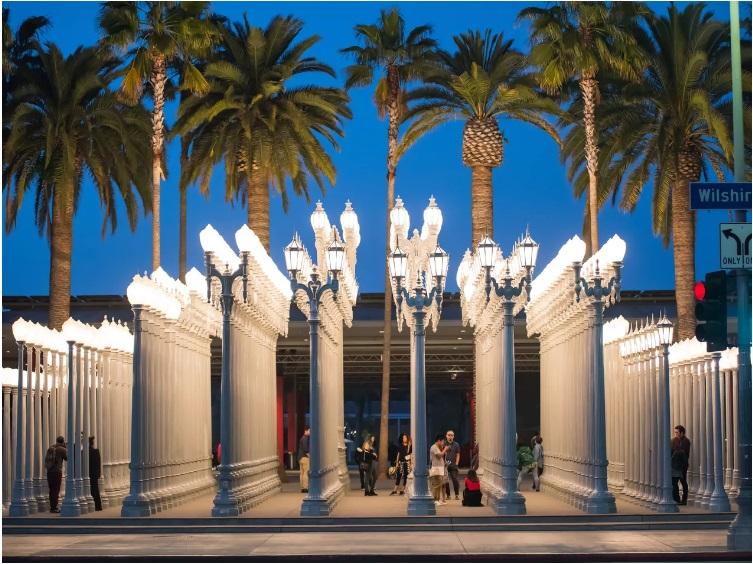
Chris Burden’s installation consists of 202 cast-iron street lamps (see fig. 2). Many of these lamps used to stand on Los Angeles streets in the past. The composition is large, with people able to walk through it and enjoy the light that appears at dusk due to the solar-powered lamps.
Created in 2008, the assemblage sculpture has become one of the symbols of LA. The artist intended to create a cozy place where people can have a nice time by themselves or with friends. The relaxing atmosphere and mild glow make the installation look intimate and soft.
Piece 3: “Parking” by Banksy
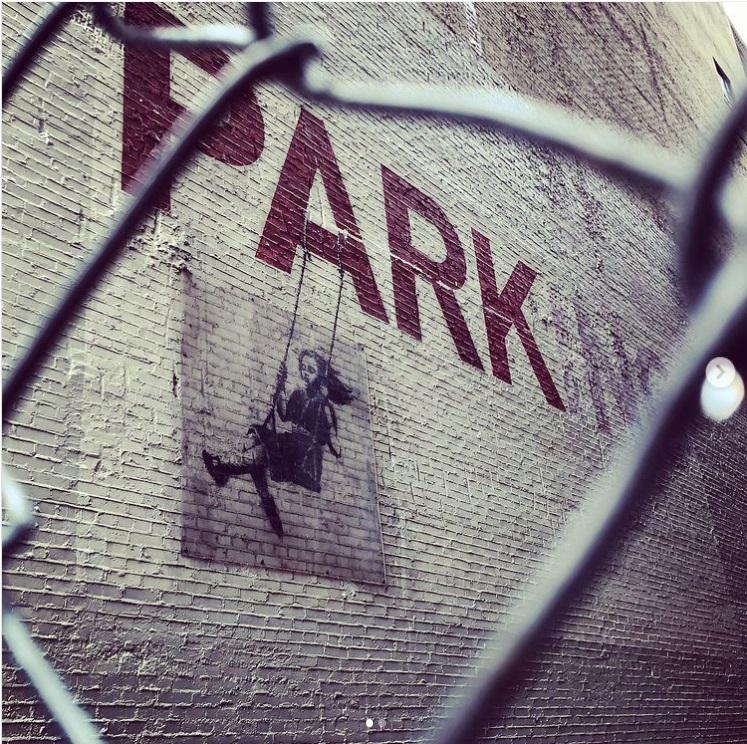
Banksy is a surreptitious street artist whose fame has spread worldwide, even though no one knows his real name. Hence, each of his new works is welcomed enthusiastically by the people in whose cities he decides to create. The mural “Parking” appeared on one of LA’s buildings in 2020 (see fig. 3).
The mural is about several square meters, allowing the observers to see it from a distance. As usual, there are many suggestions for why he created the mural. In this case, the letter A in the word ‘parking’ seemed to be the main impetus for painting a swing. As always, the real intention behind the iconic artist’s inspiration is unknown.
Piece 4: “Los Angeles Opens Its Heart of Compassion” by Cliff Garten
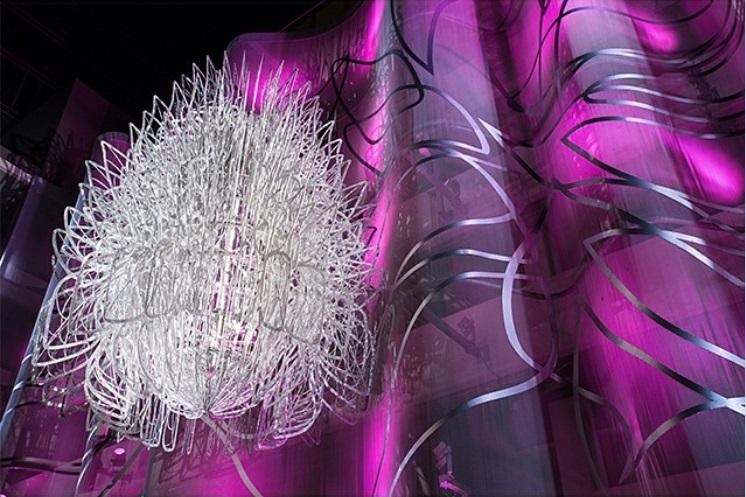
The 15-foot-tall, 10-foot-wide chandelier created by Garten in 2014 can be seen at an intersection of Vermont Avenue and Wilshire Boulevard at the heart of Koreatown in LA (see fig. 4). The piece is made of laser-cut aluminum and highlighted by white illumination. The artist intended to connect American and Korean cultures by depicting a lotus, a symbol of enlightenment in Korean folklore. The installation is popular with residents and tourists as it draws attention with its bright light and gives a sense of ease and inspiration.
Piece 5: “City of Dreams/ River of History” by Richard Wyatt
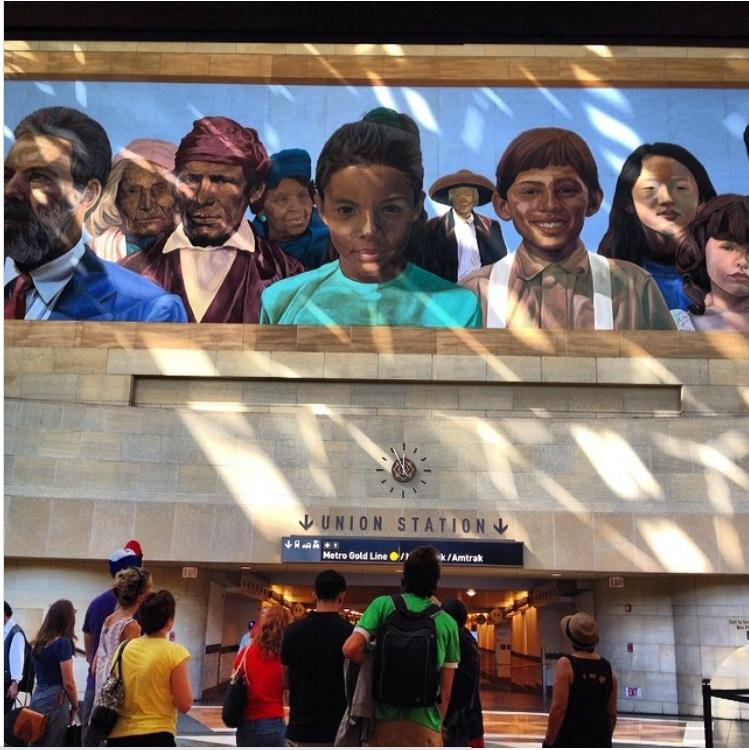
The giant mural, about two meters in height and about 10-15 meters in width, was created by Wyatt in 1996 and is located where Amtrak/Metrolink trains meet near Patsaouras Plaza. The artist depicted people of different ages and nationalities inhabiting the city of LA (see fig. 5). One can see Native Americans and present-day city inhabitants: young and old, cheerful and somber. The artist likely intended to create a sense of connection and reaffirmation in LA by uniting the elements of its past and present and shaping the path for the common future.
Piece 6: “Generators of the Cylinder” by Michael Hayden
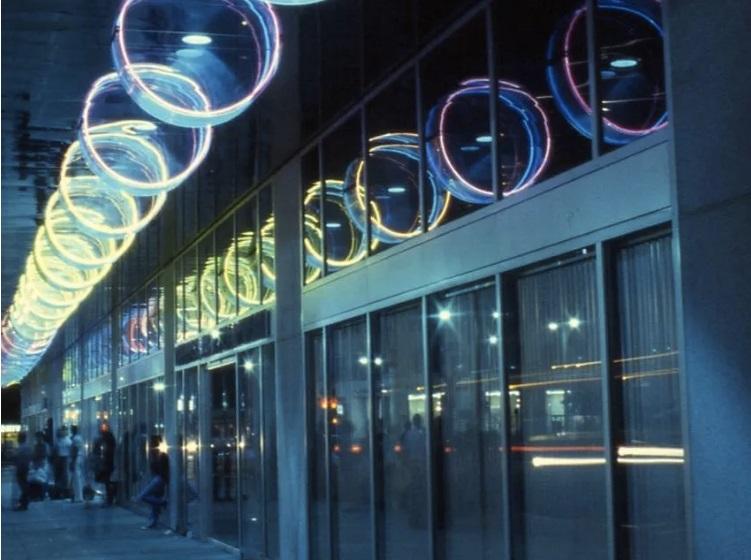
The sculpture that stretches for about 80 meters along the ceiling of a building of the International Jewelry Center was installed in 1981, shut down in 2008, and turned back on in 2015 (see fig. 6). The piece is made of holograms and sensors that reflect the movements of people passing by. The probable intention of the author was to remind people how fast the pace of their lives is and, by doing so, to inspire them to cherish the simple and slow things. At the same time, the pieces’ right design catches the eye and adds freshness to one’s mood.
How Public Art Differs from What Is Seen in Museums and Galleries
The main feature of public art that contrasts it with ‘traditional’ art found in galleries and museums is its proximity to people. One does not have to put extra effort into seeing public art pieces. In most cases, they find the viewers themselves and serve as an adornment to the environment in which they are placed. Some public art pieces are objects of argument about whether they are suitable and relevant. However, in most cases, they unite the people and places and serve as harmonious elements of the streets and buildings.
Works Cited
Barragan, Bianca. “38 Remarkable Places to Encounter Public Art in Los Angeles from Santa Monica to the Valley.” Curbed Los Angeles, 2018. Web.
Opie, Catherine. “Untitled #8.” Artnet, n.d. Web.